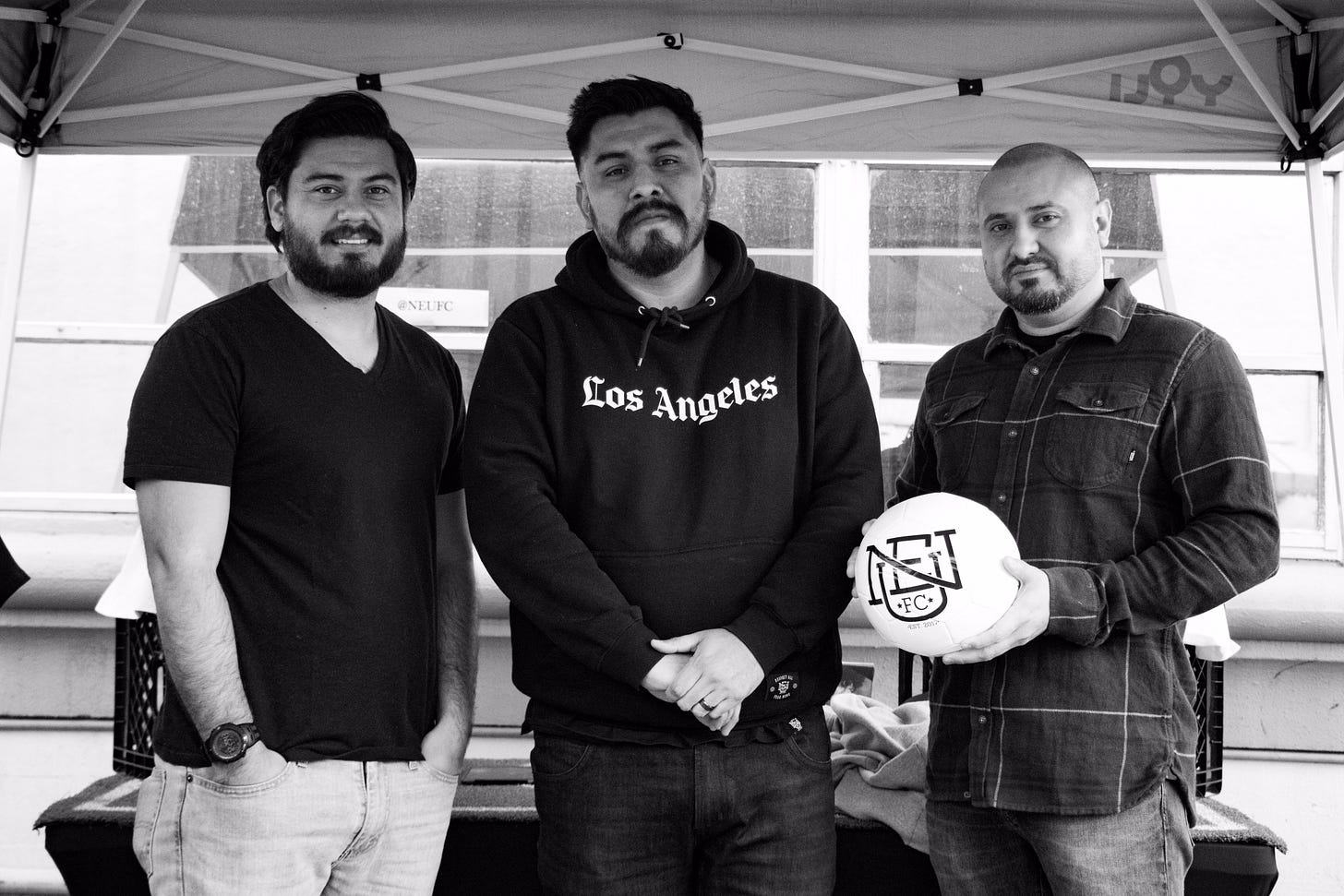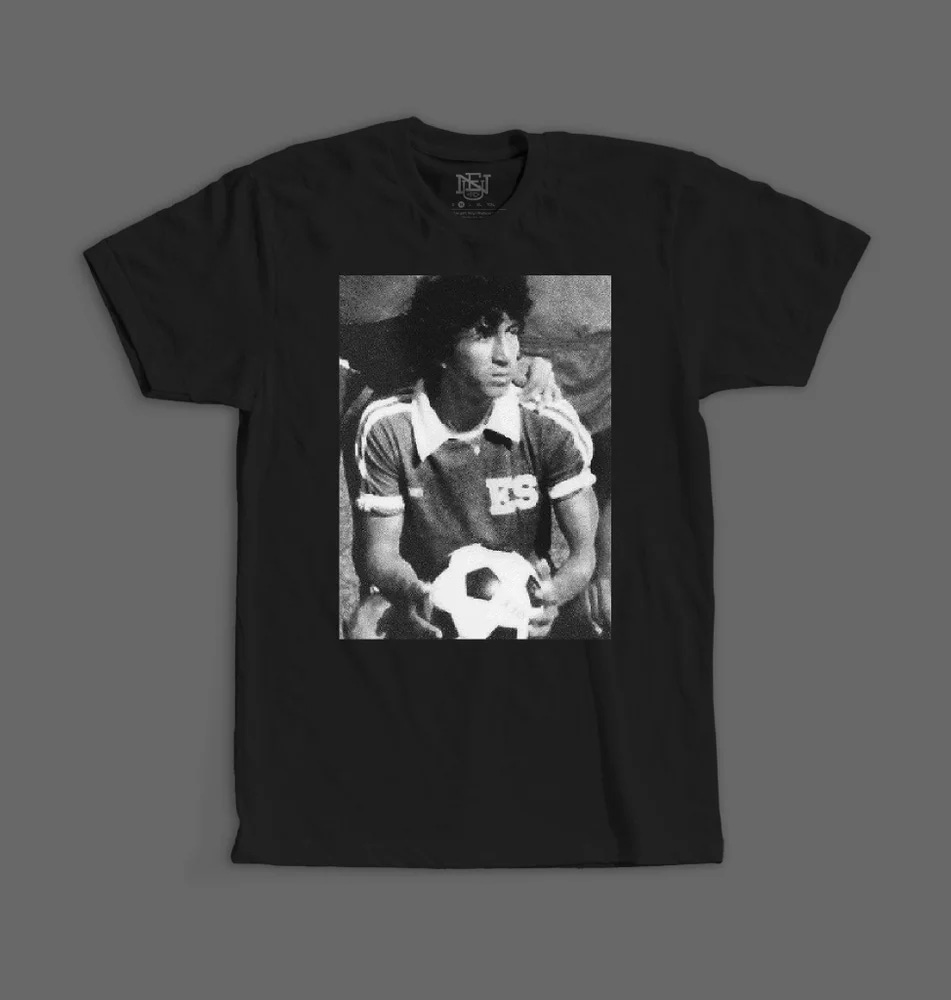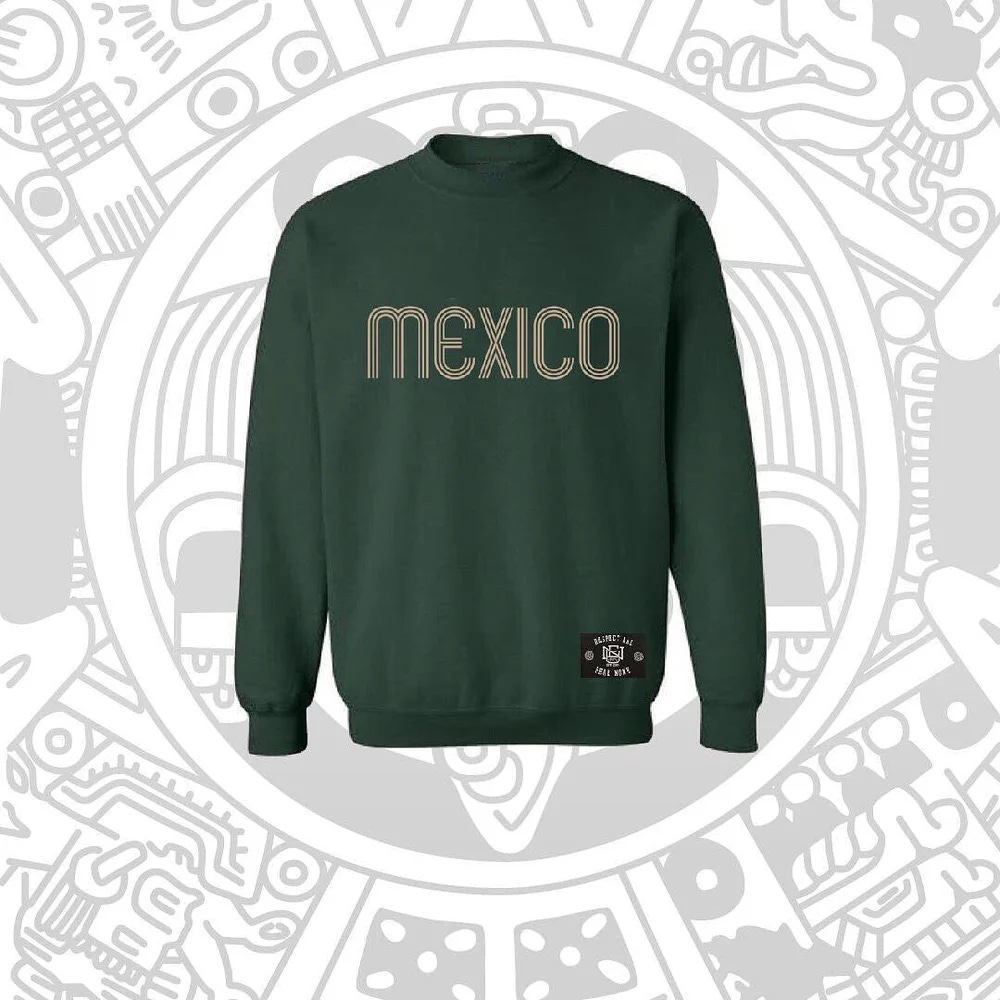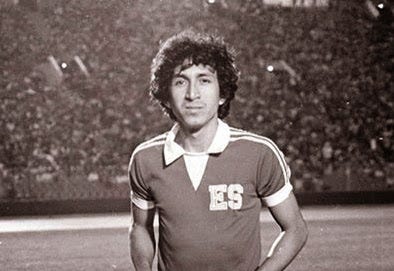Old School Concacaf Cool + "Magic"
The LA-based clothing brand repping Concacaf + the man who dazzled in El Salvador and Spain.
Let’s get Concacafed like it was the only thing that matters.

Fashion and sports go hand-in-hand, and if you haven’t seen the influence (in both directions) of what people are wearing and what people are watching, you’re not paying attention.
Three years ago, a group of Salvadoran-American guys decided to take their passion for retro looks and soccer to the next level and launch NEU FC.
I chatted with Brandon Flores (on the left in the photo), this week who along with Enrique Francia and Rene Orellana, founded the brand.
Flores told me the guys started out making shirts for their Sunday league team, New England United - named for the street team members grew up on or near in LA, not because of any Back Bay connections.
Their shirts turned plenty of heads, with Orellana’s
NEU FC took on a new meaning as the trio launched a clothing brand inspired by the old-school cool exhibited by the El Salvador teams of the past.
“These are the players we grew up watching or that our parents told us about,” Flores said when asked about what made him want to put Mágico Gonzalez or Mauricio Cienfuegos on a sweatshirt instead of someone more widely known.

Not that their items haven’t been popular enough. The crew now goes beyond simply making El Salvador-inspired products and starting to produce items for fans of Guatemala, Mexico and other Concacaf nations. They’re even dipping their toe into the CONMEBOL region (we won’t hold it against them) with teases that the next drop will be inspired by Ecuador.
They’re often sold out with extremely limited drops thwarting all but the most eager of buyers. Some of that is about production, but it’s also by design.
Flores told me they want each item to be special and be a legitimate limited release.

He also told me he and the team spend lots of time going through retro YouTube videos and photos looking for inspiration or, sometimes finding a photo so good it stands alone. There is no arguing that the retro-Concacaf images and motifs are very cool.
It’s always been a surprise to me that there isn’t more love for the Salvadoran community in the U.S. Even with the enormous community of Salvadorans in places like LA, D.C., and all over the country, there seems to be little energy for coverage of the national team, looks back at the league’s history or, beyond our little sports sphere, competent analysis of how the country’s politics got to the state they are in now and the influence the United States had on that.
NEU FC is changing that lack of love for El Salvador in a very cool way and even letting fans from other nations get in on the fun.
Check out their store or their Instagram and get me a royal blue Mágico sweatshirt if they ever come around again. I always miss the drops.

Jorge “Mágico” Gonzalez is the epitome of the player I want to feature in this newsletter.
You’ve probably heard of Mágico. Maybe you were lucky enough to see him play on TV, or maybe you were lucky enough to see him and Diego Maradona team up for Barcelona against the (5-3 winners) New York Cosmos at the Transatlantic Challenge Cup in 1984 on turf that looks like they might as well not have bothered and just had them play on the concrete below.
Yet, every article that ever comes out about him seems to either focus on why we aren’t talking about him more as a great of the game.
In some ways, that seems obvious. Mágico reportedly spurned the chance to play at clubs like Atletico Madrid and Paris Saint-Germain for a move to Cadiz, where he felt less pressure to sign and perform. Cadiz became his long-term home, with Mágico never signing on full-time with a club like Barca or one of the Serie A giants that wanted him at the time.
Despite his best efforts, the El Salvador national team did little to turn the heads of the world’s soccer fans either. While the 1982 World Cup put Mágico in the shop window for the world, La Selecta lost all three of its group games including an infamous 10-1 loss to Hungary in its opening match of the tournament. (Hungary didn’t even get out of that group…).
But it’s not for a lack of information that Gonzalez is not named among the game’s best. I hit up a journalist friend Rodrigo Lopez in El Salvador looking for the best thing he’d ever read about Mágico and he just told me, “There’s a lot of information out there about Mágico’s career.”
It’s true. Unlike Nacho Trelles’ visit to 1940s Chicago that we talked about last week, his career took place in an era when newspaper clips and even videos are far more accessible - though still not as easy to find as in today’s world, obviously.
We can see the moments when he teamed up with Maradona for Barcelona that U.S. tour. We can watch his goals for Cadiz when it seemed as though defenders were playing at half-speed as he passed the ball to himself around the defenders. We can listen to people like Maradona himself put him among the best players he’s ever seen.
He’s not even out of the zeitgeist today. Just last week he did the toilet paper juggling challenge thing.
Yet, there’s still so much mystique surrounding Mágico. There are legends like Maradona pulling a fire alarm during that tour and Mágico not bothering to report - something that supposedly put the club off signing Mágico. In some retellings of the story he’s in bed with a woman when the team finally tracks him down, which doesn’t seem to be out of character for the alleged playboy, but other times that’s not in the story.
Preferring other pursuits to the less exciting elements of being a professional is a recurring theme in the Mágico Gonzalez story: He fell asleep on the massage table at halftime, he turned down a different transfer because he wanted to kick it in Cadiz, he was best friends with one of the best Flamenco singers ever, he gave a different artist his shoes after being complemented on them and walked home barefoot, Cadiz sent a club employee to wake him up most days.
It seems impossible to separate fact from fiction, legitimate legend from lie.
To me, the question isn’t why he isn’t considered among the world’s best players ever. We know about him. The NEU FC guys know about him. Maradona knows about him. The people who have helped rack up more than a million views on multiple highlight reels know about him.
The question is why the conversation never moves past the question of why we aren’t talking more and what could’ve been.
Back Thursday when we’ll leave El Salvador and head to Mexico. Will I finally get to that pro/rel idea I’ve been mentioning the last two editions? We’ll see! Don’t forget to subscribe and send this to three of your pals who are soccer fans:




